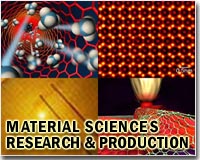 |
Evanston IL (SPX) Jan 04, 2010 It's been used to dye the Chicago River green on St. Patrick's Day. It's been used to find latent blood stains at crime scenes. And now researchers at Northwestern University have used it to examine the thinnest material in the world. The useful tool is the dye fluorescein, and Jiaxing Huang, assistant professor of materials science and engineering at the McCormick School of Engineering and Applied Science, and his research group have used the dye to create a new imaging technique to view graphene, a one-atom thick sheet that scientists believe could be used to produce low-cost carbon-based transparent and flexible electronics. Their results were recently published in the Journal of the American Chemical Society. Being the world's thinnest materials, graphene and its derivatives such as graphene oxide are quite challenging to see. Current imaging methods for graphene materials typically involve expensive and time-consuming techniques. For example, atomic force microscopy (AFM), which scans materials with a tiny tip, is frequently used to obtain images of graphene materials. But it is a slow process that can only look at small areas on smooth surfaces. Scanning electron microscopy (SEM), which scans a surface with high-energy electrons, only works if the material is placed in vacuum. Some optical microscopy methods are available, but they require the use of special substrates, too. "There are really no good techniques that are general enough to meet the diverse imaging needs in the research and development of this group of new materials," Huang says. "For example, people have proposed putting graphene materials on plastic sheets for flexible electronics, but seeing them on plastic has been very challenging. If one cannot exam these materials, quality control is going to be difficult." Fluorescent labeling has been used routinely to image biological samples, typically by using fluorescent dyes that make the objects of interest light up under a fluorescence microscope. But such a technique doesn't work for graphene materials because of a mechanism called fluorescence quenching: they can "turn off" the fluorescence of nearby dye molecules. "So we thought, how about we just put dye everywhere?" Huang says. "That way, the whole background lights up, and wherever you have graphene will be dark. It's an inverse strategy that turns out to work beautifully." When Huang and his group coated a graphene sample with fluorescein and put it under a fluorescence microscope - a much cheaper, readily available instrument - they obtained images as clear as those acquired with AFM and SEM. The team named their new technique fluorescence quenching microscopy (FQM). "When (graduate student) Jaemyung first showed me the FQM images of graphene materials," Huang says, "I was tricked by the vivid details and thought they were SEM or AFM images." In addition, the group found that FQM can visualize graphene materials in solution. "No one has been able to demonstrate this before," Huang says. The dye can also be added to photoresist materials so that graphene sheets can be seen during photolithography. They also found that the dye could easily be washed off without disrupting the sheets themselves. "It's a simple and dirt-cheap method that works surprisingly well in many situations," Huang says. Lead author of the paper Jaemyung Kim is a cluster fellow with the Initiative for Sustainability and Energy at Northwestern University. Other authors include Laura J. Cote and Franklin Kim, both of Northwestern. The work was supported by a seed grant from the Northwestern Nanoscale Science and Engineering Center.
Share This Article With Planet Earth
Related Links McCormick School, Northwestern Space Technology News - Applications and Research
 Web glue key among 'green' adhesives
Web glue key among 'green' adhesivesLaramie, Wyo. (UPI) Dec 24, 2009 A sticky compound in spider webs could lead to the development of a new generation of non-petroleum adhesives and glues, scientists in Wyoming said. Much research has been conducted on spider web silk, which rivals steel in strength, but comparatively little is known about the glue that coats the silk, said Omer Choresh, a microbiologist at the University of Wyoming. Studies sugg ... read more |
|
| The content herein, unless otherwise known to be public domain, are Copyright 1995-2009 - SpaceDaily. AFP and UPI Wire Stories are copyright Agence France-Presse and United Press International. ESA Portal Reports are copyright European Space Agency. All NASA sourced material is public domain. Additional copyrights may apply in whole or part to other bona fide parties. Advertising does not imply endorsement,agreement or approval of any opinions, statements or information provided by SpaceDaily on any Web page published or hosted by SpaceDaily. Privacy Statement |